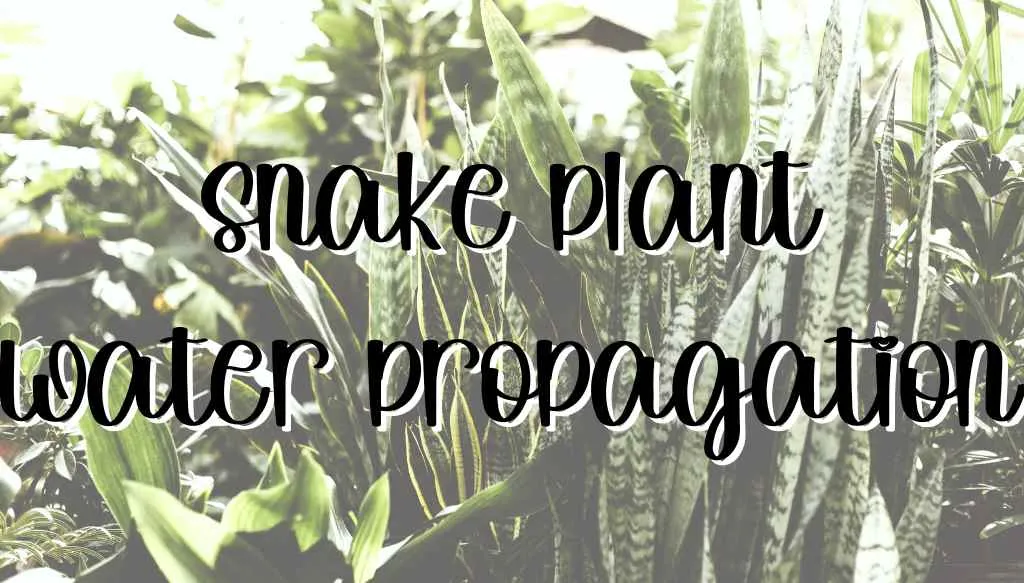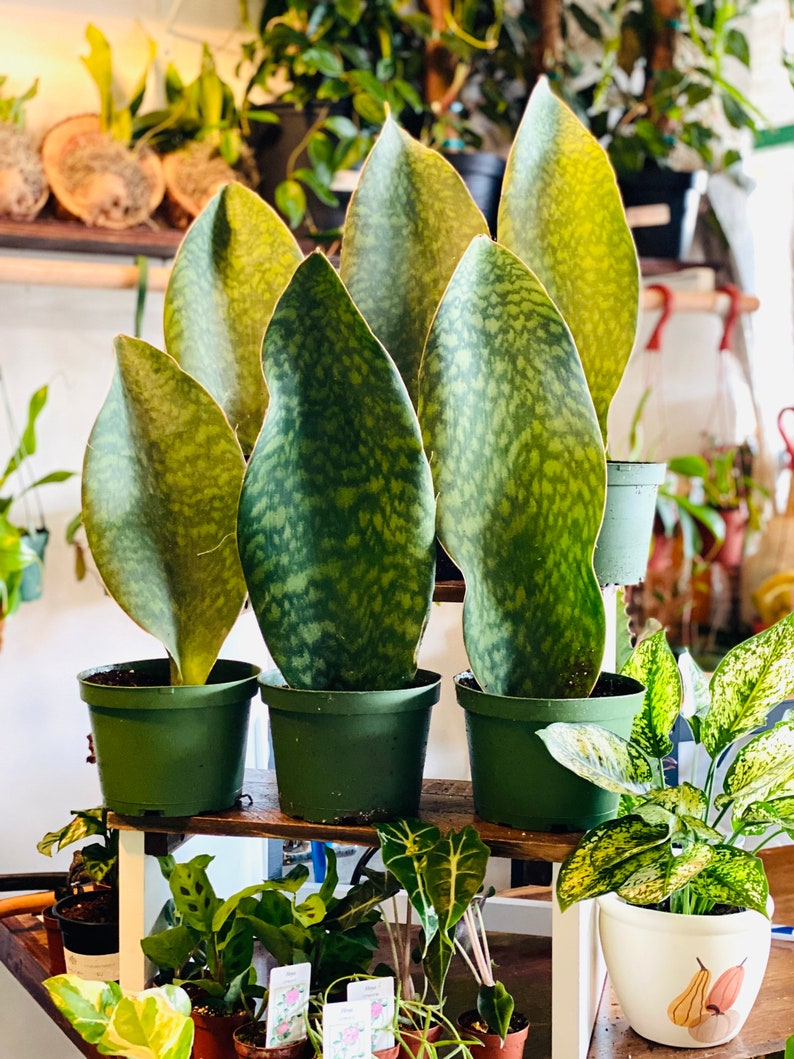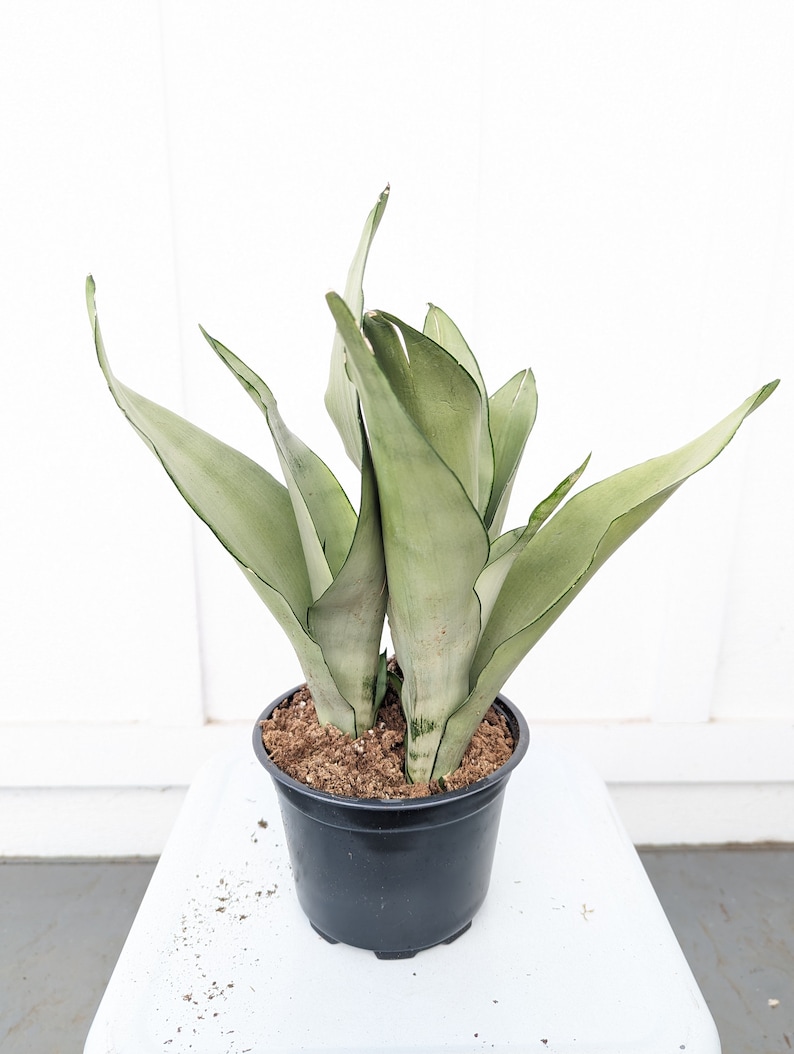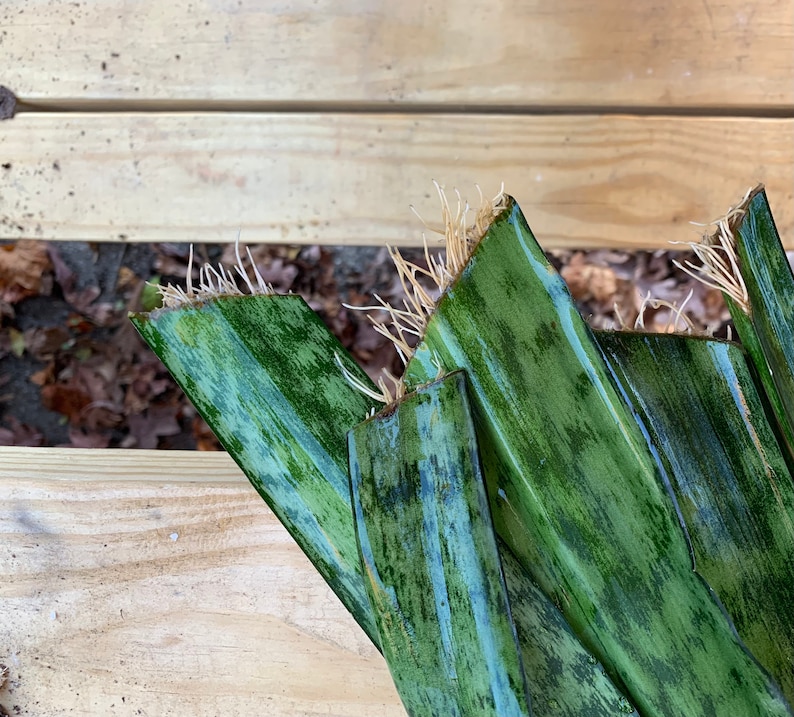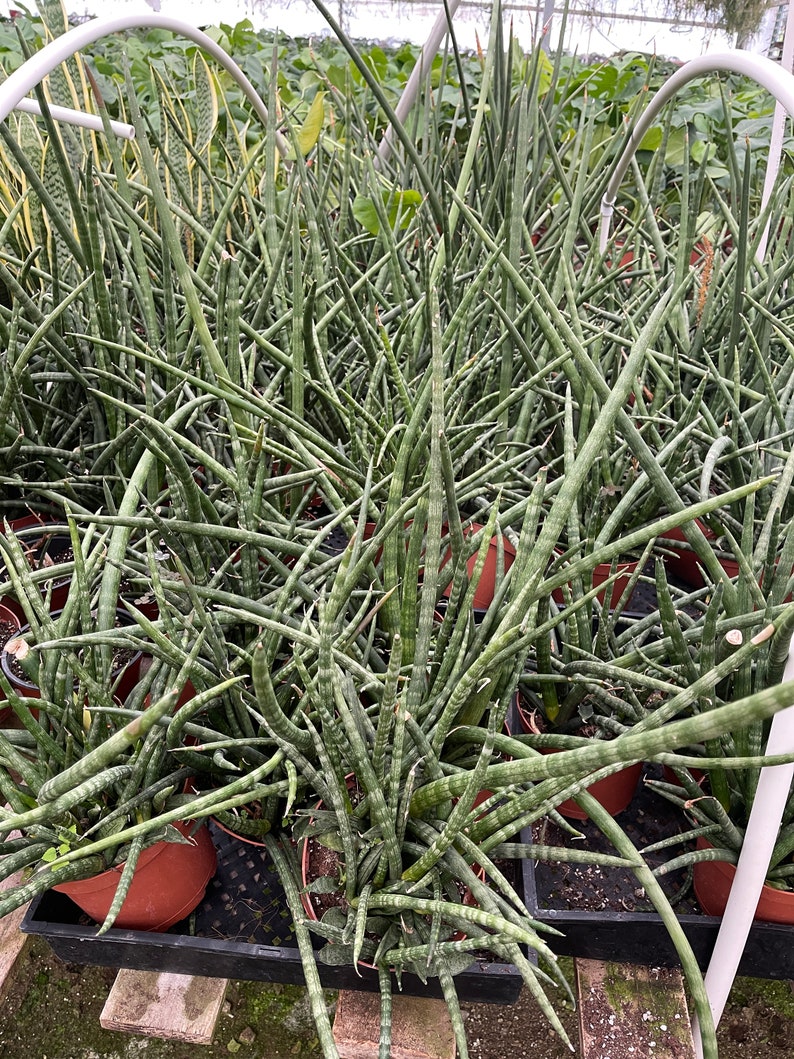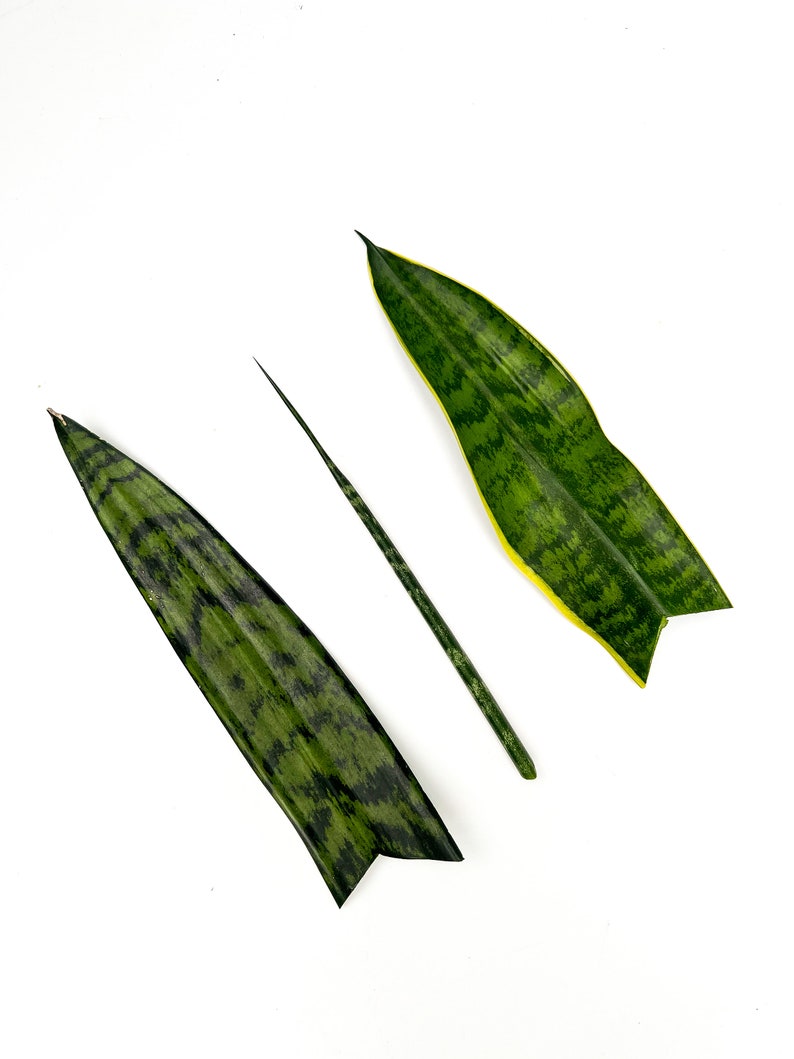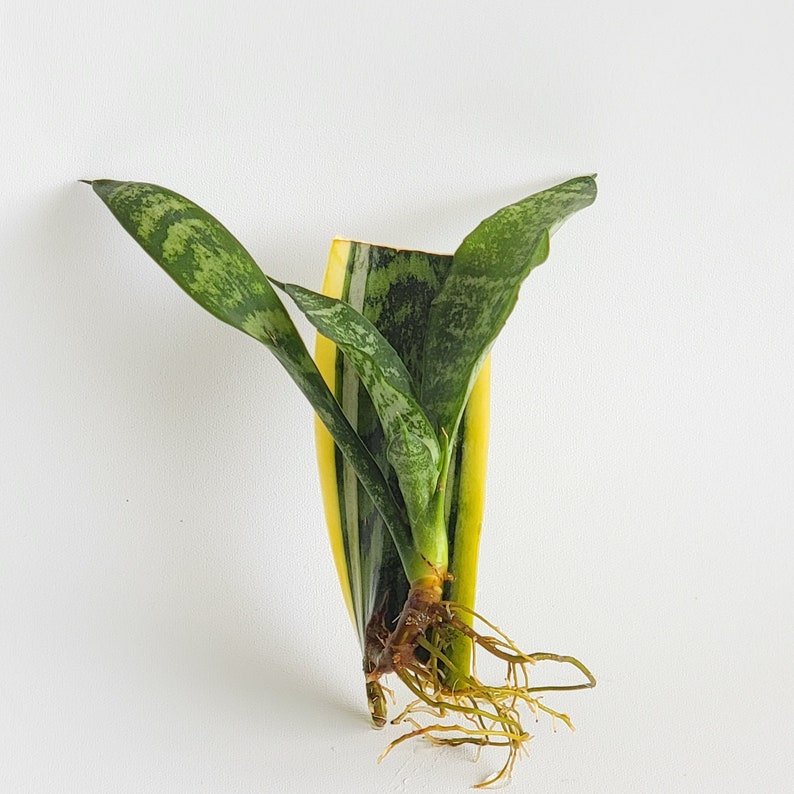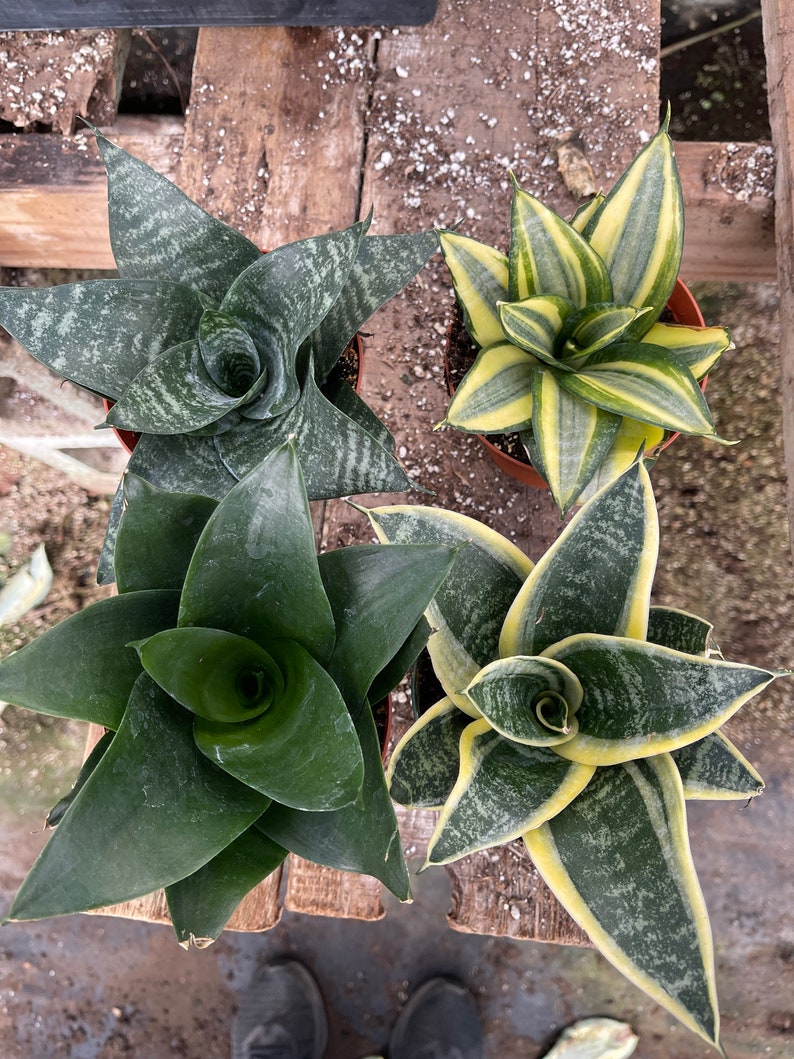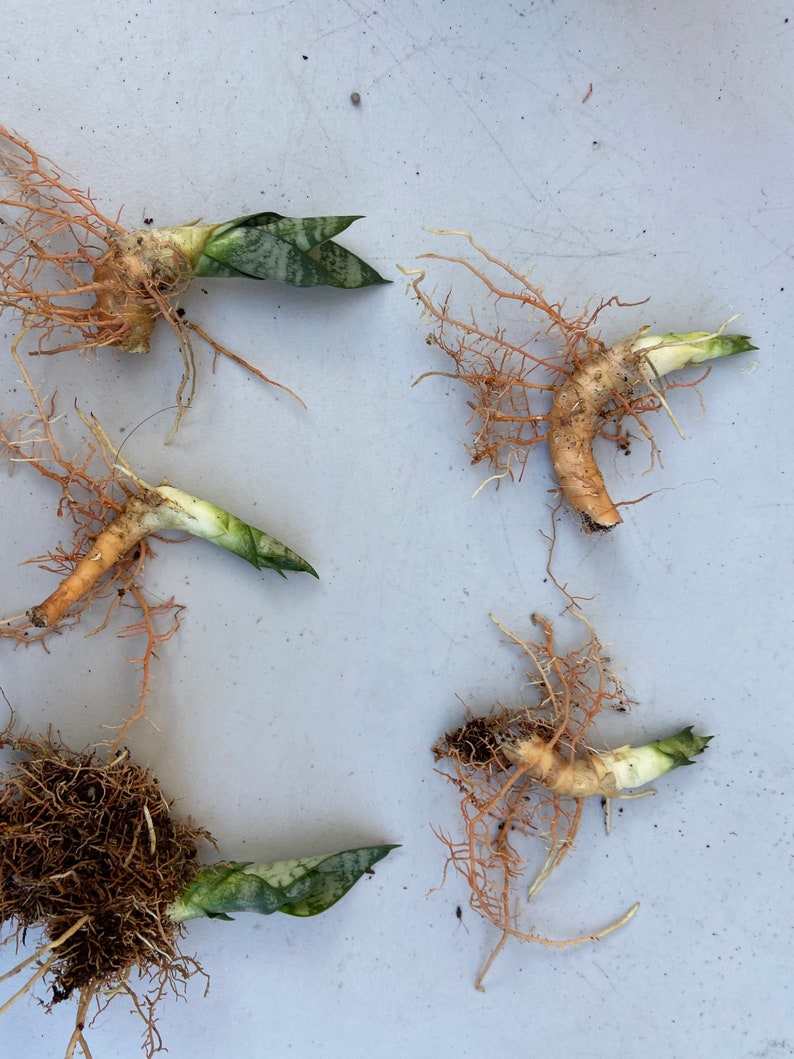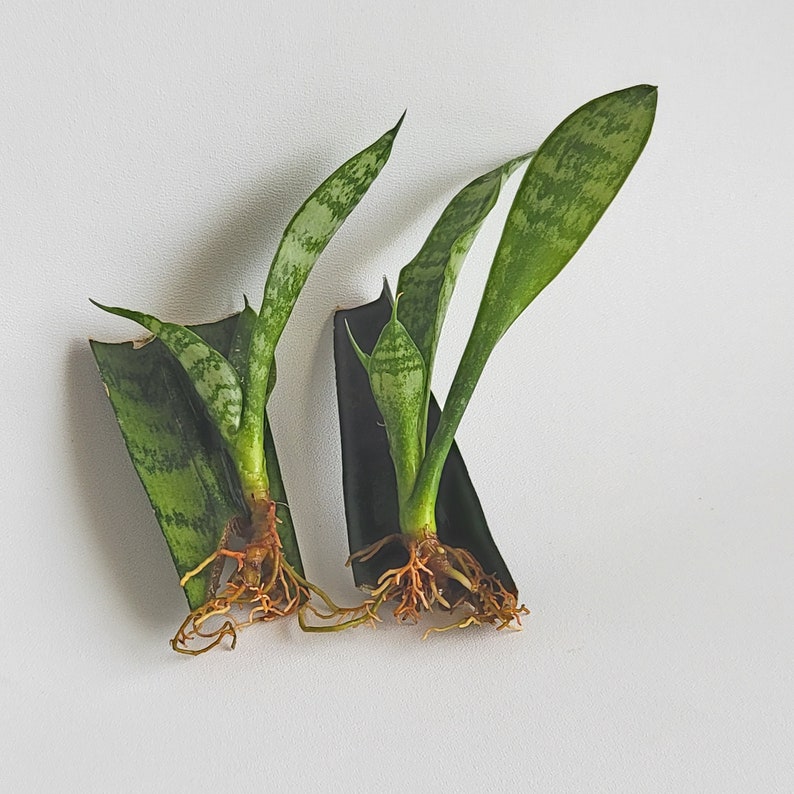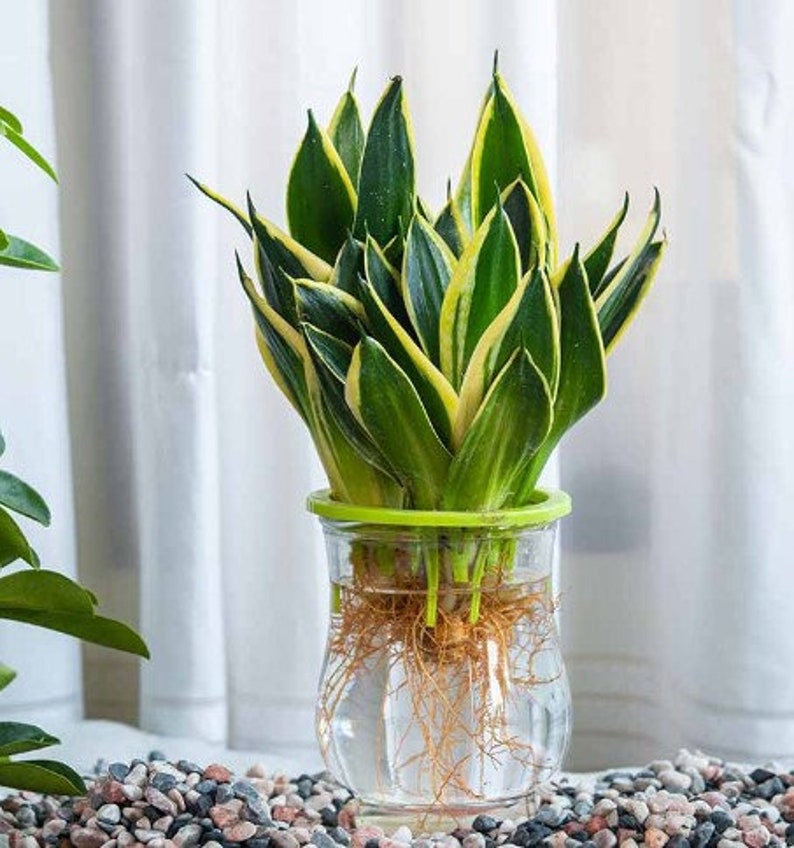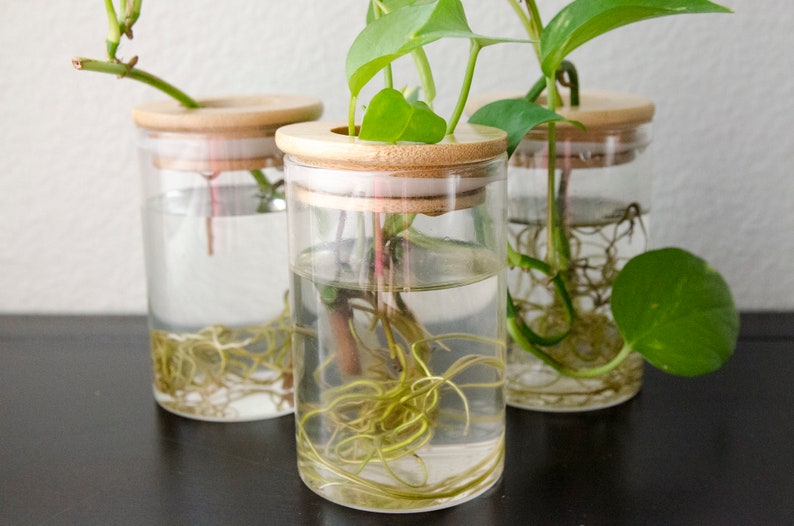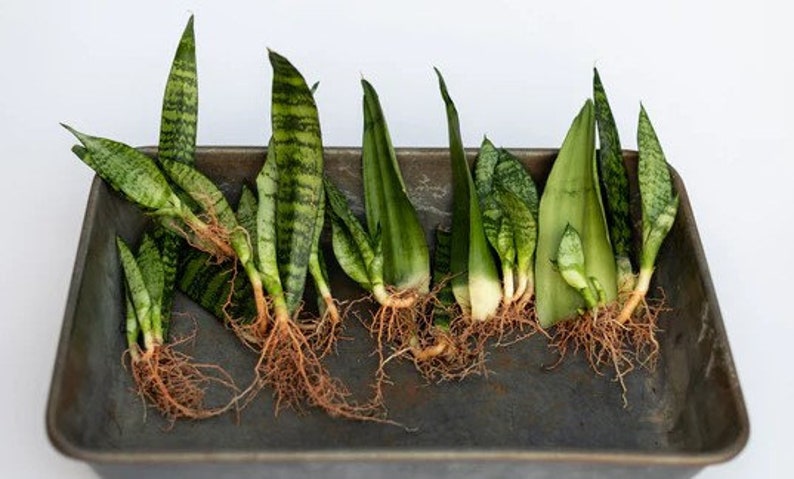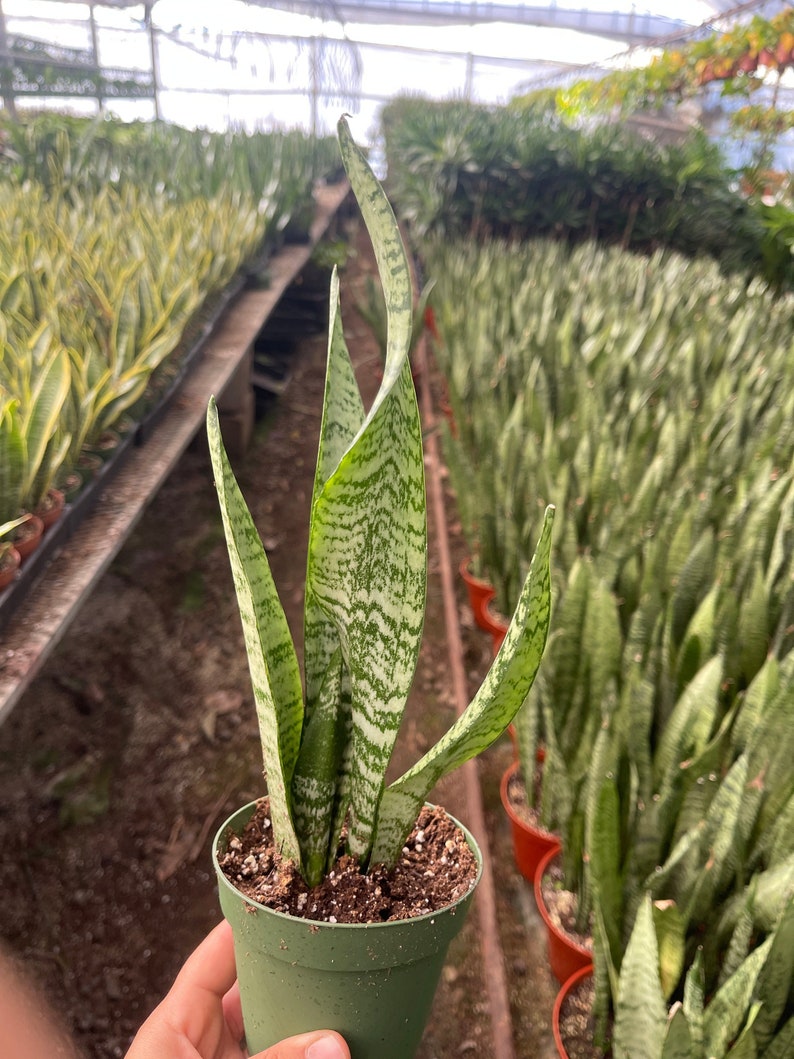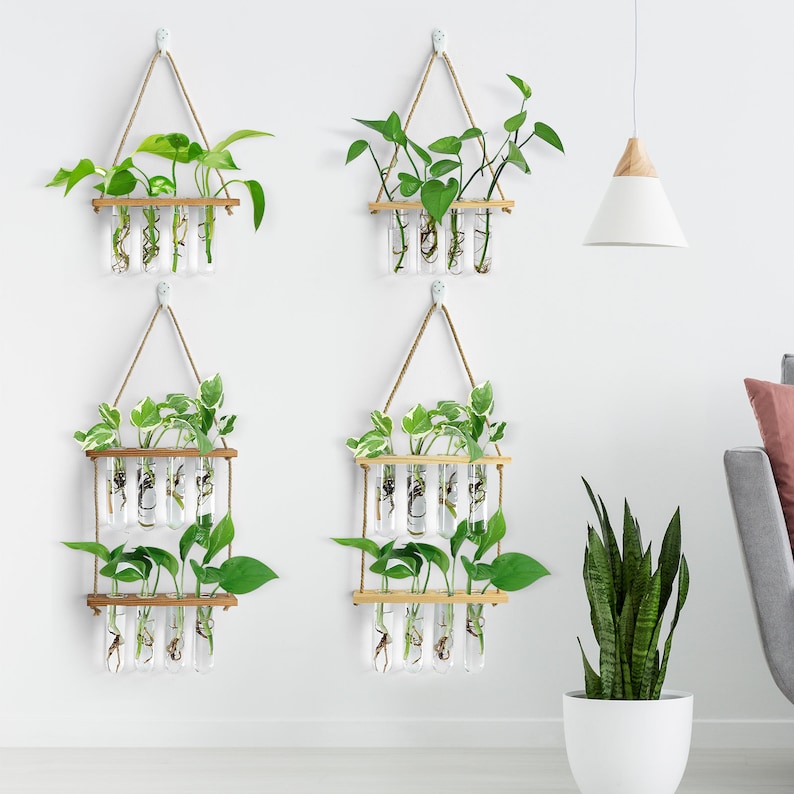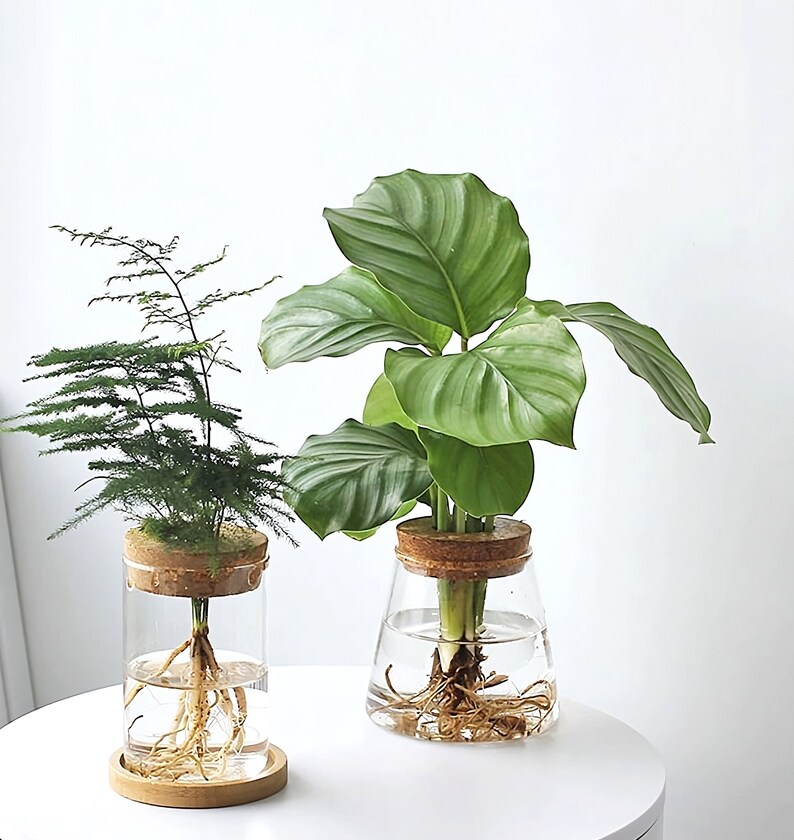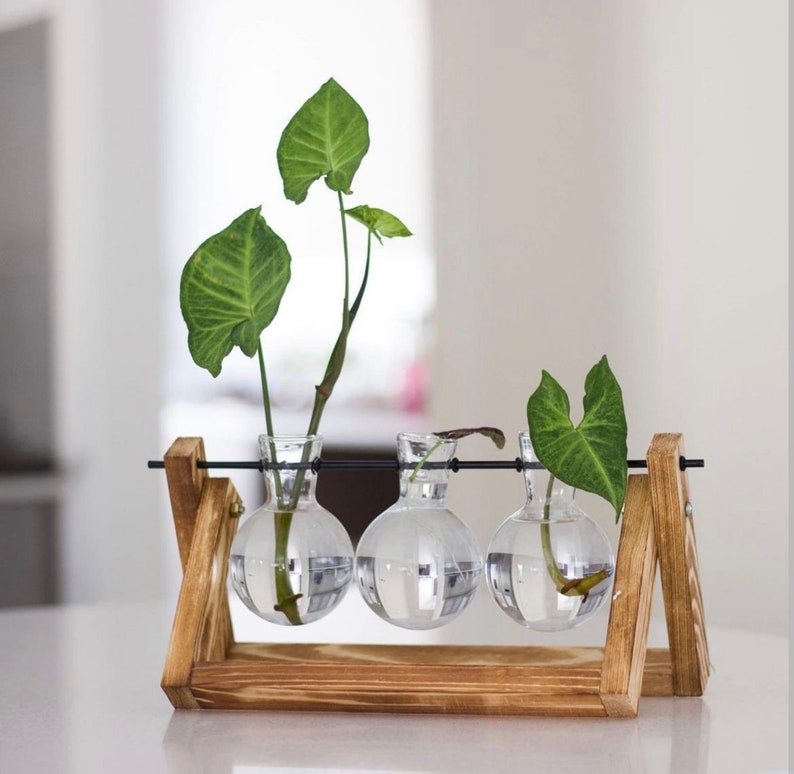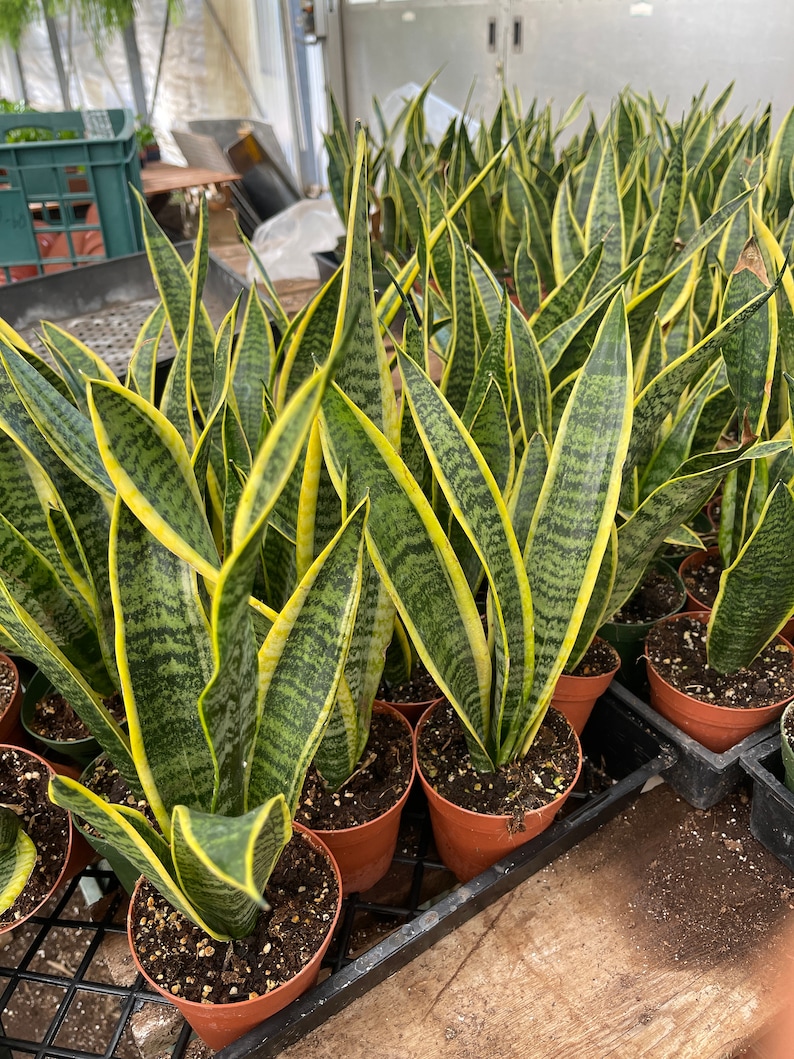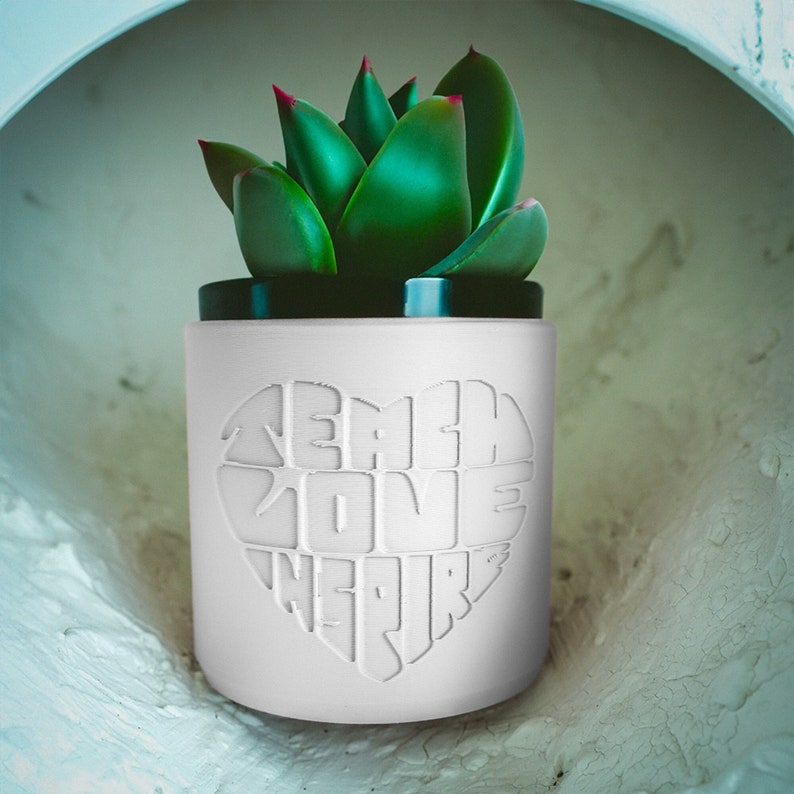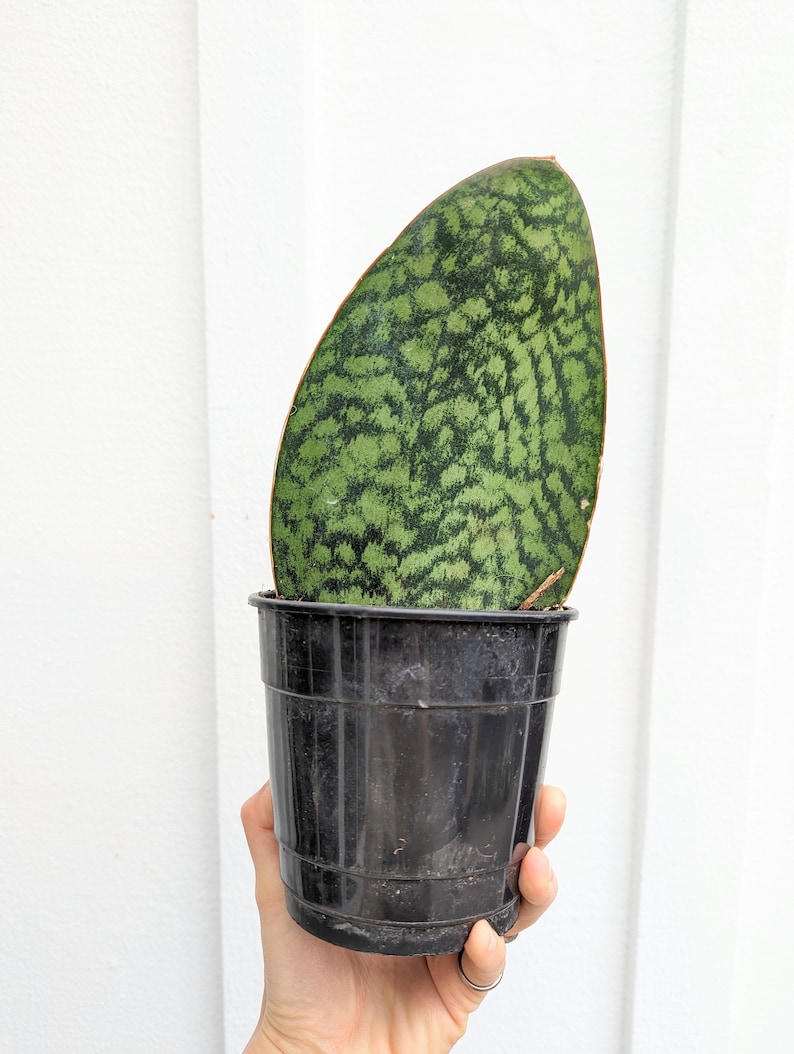One of the most common methods of propagating snake plants is through water propagation. This method involves placing a snake plant cutting in water, allowing it to develop roots before transferring it to soil.
In this comprehensive guide, we will walk you through the step-by-step process of propagating snake plants in water.

Dig in!
Understanding Snake Plant Propagation
What is propagation?
To recap propagation:
Propagation is the process of creating new plants from existing ones. It allows you to reproduce plants with desirable traits, expand your collection, or share plants with others.
Snake plant propagation can be done through various methods, including division, leaf cuttings, and water propagation.
Why choose water propagation?
Water propagation is a popular method for propagating snake plants due to its simplicity and high success rate.
It allows you to observe root development and ensures that the cutting receives the necessary moisture and nutrients to grow.
Additionally, water propagation can be a fun and educational project for both beginners and experienced plant enthusiasts.
Step-by-Step Guide to Water Propagation
Step 1: Gather the necessary materials
Before you begin the water propagation process, gather the following materials:
- A healthy snake plant with mature leaves
- A clean, clear glass or jar
- Filtered or distilled water (tap water can be used, but it may contain chemicals that can hinder root growth)
- Scissors or a sharp knife
- Optional: rooting hormone (can enhance root growth, but not necessary)
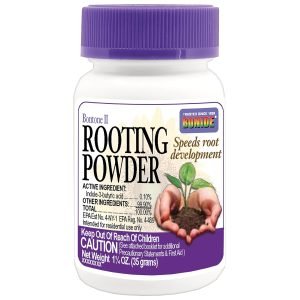
As an Amazon Associate I earn from qualifying purchases.
Step 2: Select and prepare a snake plant cutting
Choose a mature leaf from your snake plant for water propagation. Look for a leaf that is at least 4-6 inches long and has no signs of damage or disease.
Using clean scissors or a sharp knife, make a clean cut at a 45-degree angle just below a leaf node. A leaf node is a small bump or protrusion on the leaf where new growth emerges.
Step 3: Place the cutting in water
Fill your glass or jar with filtered or distilled water, leaving enough room for the cutting to be submerged without touching the bottom. Place the cutting in the water, making sure that the leaf node is submerged.
If you have multiple cuttings, you can place them in the same container, but make sure they are not overcrowded.
Step 4: Provide the right conditions
Place your glass or jar in a location with bright, indirect light. Avoid direct sunlight, as it can cause the water to become too warm, potentially harming the cutting.
Maintain a room temperature between 65-85°F (18-29°C) to encourage root growth.
Step 5: Monitor and change the water regularly
Check the water level regularly and make sure it covers the bottom portion of the cutting.
Change the water every 1-2 weeks or when it becomes cloudy or discolored. This helps prevent the growth of harmful bacteria and provides a fresh supply of oxygen to the cutting.
Step 6: Wait for root development
Root development can take anywhere from a few weeks to a few months, depending on various factors such as temperature, light, and the health of the cutting.
Keep an eye out for white, fleshy roots emerging from the leaf node. Once the roots are 1-2 inches long, your cutting is ready to be transferred to soil.
Step 7: Transplant the cutting into soil
Prepare a well-draining potting mix suitable for snake plants. Gently remove the cutting from the water, being careful not to damage the delicate roots.
Dig a small hole in the soil and place the cutting, ensuring that the roots are covered. Press the soil gently around the cutting to provide stability.
Step 8: Provide post-transplant care
After transplanting, place your snake plant in a location with bright, indirect light. Water it sparingly, allowing the soil to dry out partially between waterings.
Overwatering can lead to root rot and other issues. Gradually increase the frequency of watering as the plant establishes itself in its new pot.
Tips for Successful Water Propagation
- Choose healthy snake plant leaves with no signs of damage or disease.
- Use clean tools to make a clean cut below a leaf node.
- Place the cutting in filtered or distilled water to avoid chemicals that can hinder root growth.
- Maintain a consistent temperature between 65-85°F (18-29°C) for optimal root development.
- Change the water regularly to prevent bacterial growth and provide oxygen to the cutting.
- Be patient and allow sufficient time for root development before transplanting the cutting into soil.
What Can I Do With All of These New Snake Plants?
Here are some key points regarding what you can do with water propagated snake plants:
Observation
Water propagation allows you to closely observe the rooting process. As the cutting remains submerged in water, you can monitor the growth of roots and ensure they are healthy and well-established before transplanting.
This visibility can be beneficial for beginners, as it provides a clear indication of the cutting’s progress. I keep my water propagations near the kitchen sink since the lighting there is great so I love teaching my kids what’s going on as new roots start forming.
Experimentation
Water propagation offers an opportunity to experiment with different methods and conditions. You can try using different types of water, such as filtered or distilled water, to see if it affects root development.
Additionally, you can explore various rooting hormones or natural remedies to promote faster and stronger root growth.
Gift or Trade
Once the water propagated snake plants have developed strong roots, they can be potted and used as gifts or for trading with other plant enthusiasts.
Teacher Gift Idea
Hint, hint: These make GREAT gifts for teachers because they’re so low maintenance and won’t need any attention over the weekend or even longer breaks.
Sharing your propagated snake plants with friends, family, or fellow plant lovers can be a fulfilling experience, as it allows you to spread the joy of plant ownership and contribute to the green community.
While water propagation is a popular method, some experienced gardeners suggest transferring the rooted cutting into soil as soon as possible. Soil provides the necessary nutrients and stability for their long-term growth. However, if you choose to keep the plant in water, it’s crucial to monitor the water quality, change it regularly, and ensure the roots are not submerged for too long, since it can lead to root rot.
Water propagation is an effective and rewarding method for propagating snake plants. By following the step-by-step guide outlined in this article, you can successfully propagate your snake plant and expand your collection.

